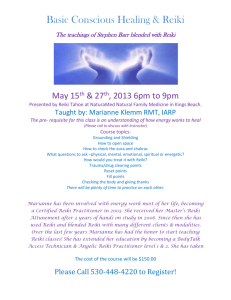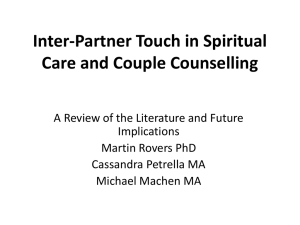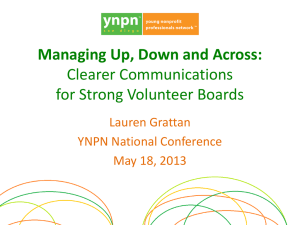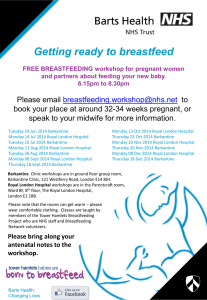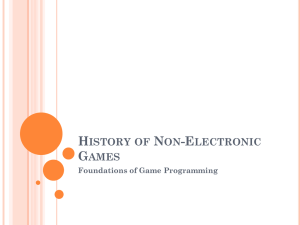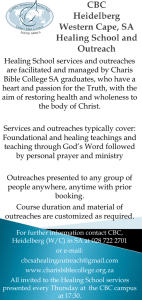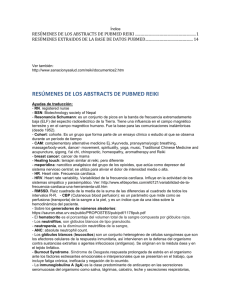Reiki Level I & II Training Powerpoint
advertisement
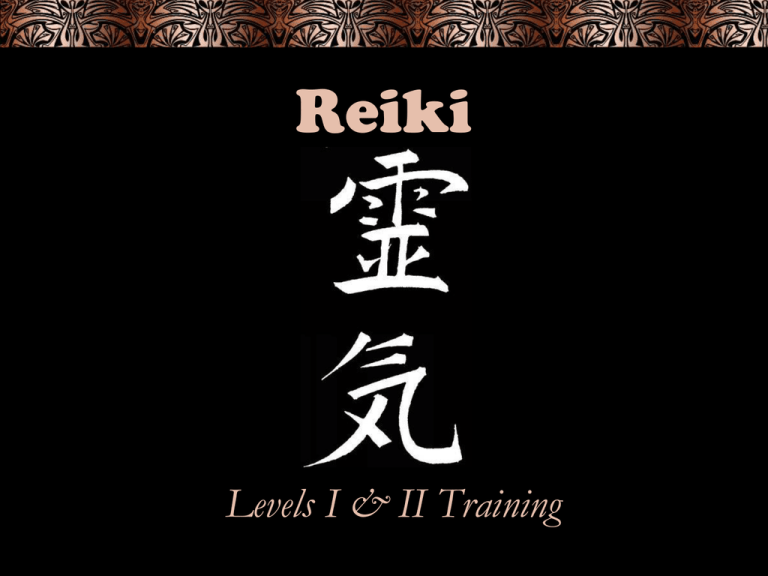
Reiki Levels I & II Training By Lauren Royal - 2010 1 What is Reiki? “Reiki is a Japanese technique for stress reduction and relaxation that also promotes healing.” (Reiki.org) Reiki is a form of energy transfer or healing through your hands or palms. The principle behind it being that through attunement by a “Master” (Level III or Shinpiden) one becomes a conduit for universal energy to flow through. Thus, when one “heals” you are just letting the energy flow through you into the person for the person’s body to use as it sees fit. Reiki is not a religion, it is a folk art. In quite a few books and websites the meaning of the word Reiki is said to be “Universal Life Energy”, which I have found not to be quite right. Rei means, “ghost, spirit, soul; supernatural, miraculous, divine; ethereal body” and ki means, “as, air; breath; energy; force; atmosphere; mood; intention; emotion; attention”, thus coming together to loosely mean in English: “mysterious atmosphere; spiritual power”. By Lauren Royal - 2010 2 History of Reiki "Usui did not see himself as a teacher. He made no claims for what he practiced - others approached him and asked to learn. That is how he was free to do as he did." The history of how Reiki came to be starts with its creator, Dr. Mikao Usui. He was born on the 15th of August 1865 in the village of Taniai (now called Miyama cho) in the Yamagata county of the Gifu Prefecture in Japan. He was a Buddhist Priest and spiritualist. Being a descendent of the famous samurai warlord Toshitane Chiba, his family practiced martial arts, thus he too studied Aiki Jutsu. Not only being Buddhist, he was also influenced by his martial arts training, Shinto, Taoism, and Shugendo. In the early 1920’s he did a 21 day practice called ‘kushu shinren’ on Mt. Kurama Yama and it was during this process it is said he developed the Reiki system. By Lauren Royal - 2010 3 History of Reiki (cont.) Thus, Reiki was born, but it wasn’t really called ‘Reiki’ originally, Reiki was just a term Dr. Usui used. What Usui Mikao taught was called 'Usui do' - 'the way of Usui', and what he practiced on people would most likely have been called 'Usui teate'- meaning 'hands-on'. Afterward he opened a clinic/school called the Gakkai and helped and healed many of the poor. He even aided Earthquake victims in 1923 and because of this word spread of his abilities as a healer. He was even awarded the Kun San To award by the Japanese government for his work with the earthquake victims. He died of a stroke in 1926 at the age of 62. He had two children with his wife Sadako Suzuki, Fuji and Toshiko. After his death, Mr. J. Ushida took over as president of the Usui Reiki Ryoho Gakkai and erected a memorial stone at his grave site. Contrary to versions of the Reiki mythos, Chujiro Hayashi was not Dr. Usui’s successor to his school, but was a student of Usui’s and opened up a Reiki clinic in Tokyo and along came a woman named Hawayo Takata… By Lauren Royal - 2010 4 History of Reiki (cont.) Hawayo Takata was visiting Japan from Hawaii to attend her sister’s funeral and had just been recently diagnosed with a series of health issues. Doctors had advised her she needed surgery to resolve them, but she had heard of Dr. Hayashi’s clinic and decided to get treated there instead. Over time she switched from patient to student and in 1938 she was initiated as a Master. She then went back to Hawaii and set up her own Reiki clinic with Dr. Hayashi and his daughter’s help. However, she didn’t initiate other Masters until 1970. From here she did several curious things in that she charged $10,000 for Master’s training, she didn’t allow her students to take notes or tape her as they had to memorize everything. Also after Dr. Hayashi died, she stated she was the only Reiki Master left in the world. She died in 1980. No one really knows why she did these things, but for a long time she was the West’s only source of information about Reiki and almost every Master from the West can trace their lineage back to her. By Lauren Royal - 2010 5 Reiki Attunement: Level 1 • I am now going to attune you to Reiki level 1. • Please just sit quietly with your palms resting on your knees. You may meditate if you wish. • I will be touching you, moving your arms and lightly slapping your palms during this procedure, so do not be alarmed when this happens. By Lauren Royal - 2010 6 Level 1: Hand Positions Congratulations! You’ve been initiated into level one of the Reiki system. You can now use Reiki energy to heal yourself and others. Also, I’ll teach you the first Reiki Symbol, Cho Ku Rei. First – How to self heal in Reiki: By Lauren Royal - 2010 7 Level 1: Hand Positions By Lauren Royal - 2010 8 Level 1: Hand Positions By Lauren Royal - 2010 9 Level 1: Hand Positions Hand positions for healing others: By Lauren Royal - 2010 10 Level 1: Hand Positions After the last position (the bottoms of the feet) one then “smoothes” the energy by making a wiping motion above the patient from the head to the feet. Then help the person slowly get up after their healing. By Lauren Royal - 2010 11 Level 1: Cho Ku Rei • Cho Ku Rei is a power symbol when you need an extra boost in power. It is also a protective symbol. Out of all of the Reiki symbols, Cho Ku Rei is one of the most versatile and powerful of the symbols, even rivaling the Master’s symbol. By Lauren Royal - 2010 12 Level 1: Cho Ku Rei • It can be used at any time during a treatment, used over certain body parts if you need a boost there, or you draw the symbol on your palms before you start a healing session. • You can put it on things to “charge” them with energy. • You can put it on things you wish to protect. • You can use it to help banish negative energy. By Lauren Royal - 2010 13 Reiki Attunement: Level 2 • I am now going to attune you to Reiki level 2. • Please just sit quietly with your palms resting on your knees. You may meditate if you wish. • I will be touching you, moving your arms and lightly slapping your palms during this procedure, so do not be alarmed when this happens. By Lauren Royal - 2010 14 Level 2: Sei He Ki Congratulations! You’ve been initiated into level two of the Reiki healing system. In this level you learn two more symbols: Sei He Ki and Hon Sha Ze Sho Nen. By Lauren Royal - 2010 15 Level 2: Sei He Ki • Sei He Ki is the Mental/Emotional Symbol and is used in healing mental and emotional traumas in a Reiki session. Most use it by drawing it on their palms before a healing session, much like Cho Ku Rei. By Lauren Royal - 2010 16 Level 2: Sei He Ki • Using this symbol has been known to stop bleeding. • If during a session, emotional issues are coming up, draw it over the throat or heart to help the issues come forth and heal. • It can be used for self healing, if stressed write down what your stressed about and draw Sei He Ki over it. Or draw the symbol and meditate upon it. • Draw it over a photo of someone you are getting over a relationship with or has passed on to help you heal. Warnings: • Remember, just because you have received Reiki training does not mean you are a trained psychologist now! If an issue comes up during a healing session that you cannot or do not know how to handle, kindly refer them to a councilor or other clinic. Reiki cannot replace medical treatment. By Lauren Royal - 2010 17 Level 2: Hon Sha Ze Sho Nen • Hon Sha Ze Sho Nen is the long distance Reiki symbol and allows you to transmit or ‘beam’ Reiki energy to people not in the room with you. By Lauren Royal - 2010 18 Level 2: Hon Sha Ze Sho Nen • Use this symbol to send Reiki energy to family members, or anyone else you know of that needs healing but you cannot travel to for any reason. • Imagine them in your palms (like your cupping them in your hands) or point your palms in their direction or use a photo of them and place your hands on it after drawing the Hon Sha Ze Sho Nen symbol to send them energy. • This symbol is also unaffected by time as you can send healing energy into your past or into the future for an upcoming event (like a job interview for instance). By Lauren Royal - 2010 19 The Gassho Meditation Now that you have the hand positions and symbols down, I’m going to teach you a couple of meditations used in Reiki. The first is the Gassho meditation (its also just called ‘Gassho’) that was practiced every morning and evening by Dr. Usui and he called this the first pillar of Reiki. You can do it standing or sitting. •Close your eyes and fold your hands into a prayer position with your fingers pointing up and your thumbs touching your heart. •Focus all of your attention on the place where your middle fingers meet. •If thoughts arise, and they will, acknowledge them and then set them aside. If you loose focus, go back to focusing on your middle fingers. As you keep doing this you can keep your attention on your fingers for longer and longer without thoughts arising. •When finished, take a few deep breaths, bring your attention from your fingers to your eyes and then open your eyes slowly. By Lauren Royal - 2010 20 Before you heal: Reiji-ho Reiji-ho means “indication of spirit” and is the second pillar of Reiki. You do this before you heal someone. • Do the Gassho meditation, but only for a moment or so. • Say a prayer giving thanks for Reiki and asking it to begin to flow now. • Say a prayer on behalf of your client, asking that they be completely healed. • Ask the spirit of Reiki to guide your hands to where they are needed. • Follow your inner guidance and allow your hands to be directed by the spirit of Reiki. Notice any impressions you may get over certain areas and use this to improve or target your treatments. By Lauren Royal - 2010 21 Reiki Ideals • • • • • Just for today – Do not anger, Just for today – Do not worry, Honor your parents, teachers and elders Earn your living honestly Show gratitude to every living thing - Dr. Usui By Lauren Royal - 2010 22 A Word to the Wise: Please keep in mind a few things: • This is considered an alternative healing system, thus just because you are trained in Reiki now does not mean you are a medical professional in any way. You should ALWAYS encourage whomever you help to seek professional medical advice from a Doctor or Nurse practitioner. Again, Reiki is not a replacement for real medical treatment! • Remember, as a Reiki practitioner, you are just a conduit for the energy coming through you. Thus, technically you are not the one ‘healing’, you are just facilitating the process. In the end, it is always the body that heals itself. • Like anything else that is considered ‘spiritual’ in nature, feel free to take all of this with a grain of salt – in my book skepticism is a good thing! By Lauren Royal - 2010 23 Credits & Questions? • Wikipedia: Reiki and Mikao Usui articles • Reiki the Healing Touch: First and Second Degree Manual by William Lee Rand • Essential Reiki by Diane Stein • Reiki.org ? Thanks for being such a great class! jaibyrd@gmail.com www.pathofbalance.org By Lauren Royal - 2010 24
